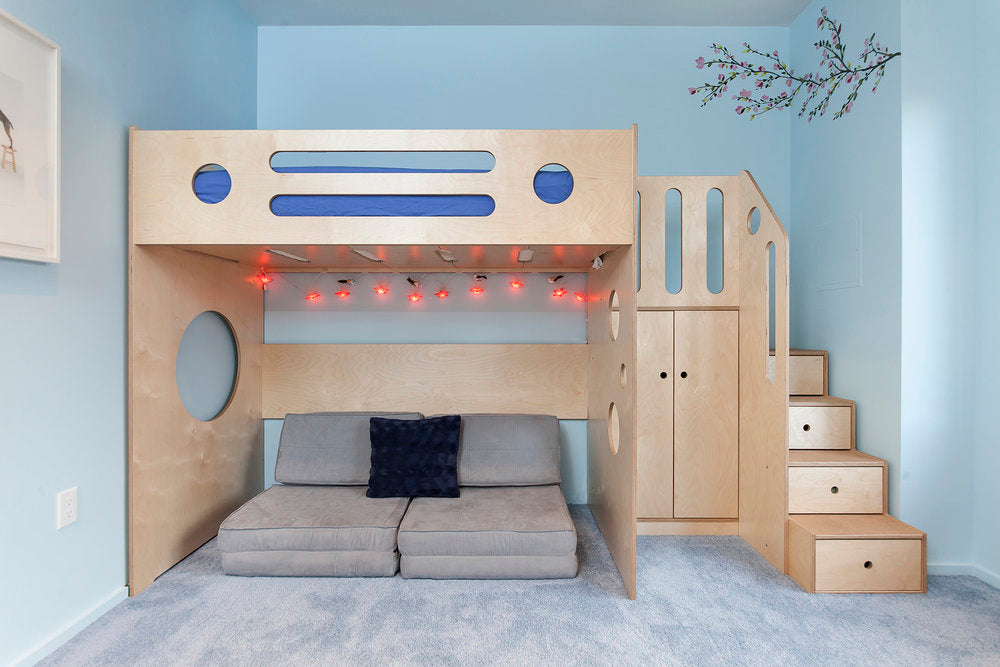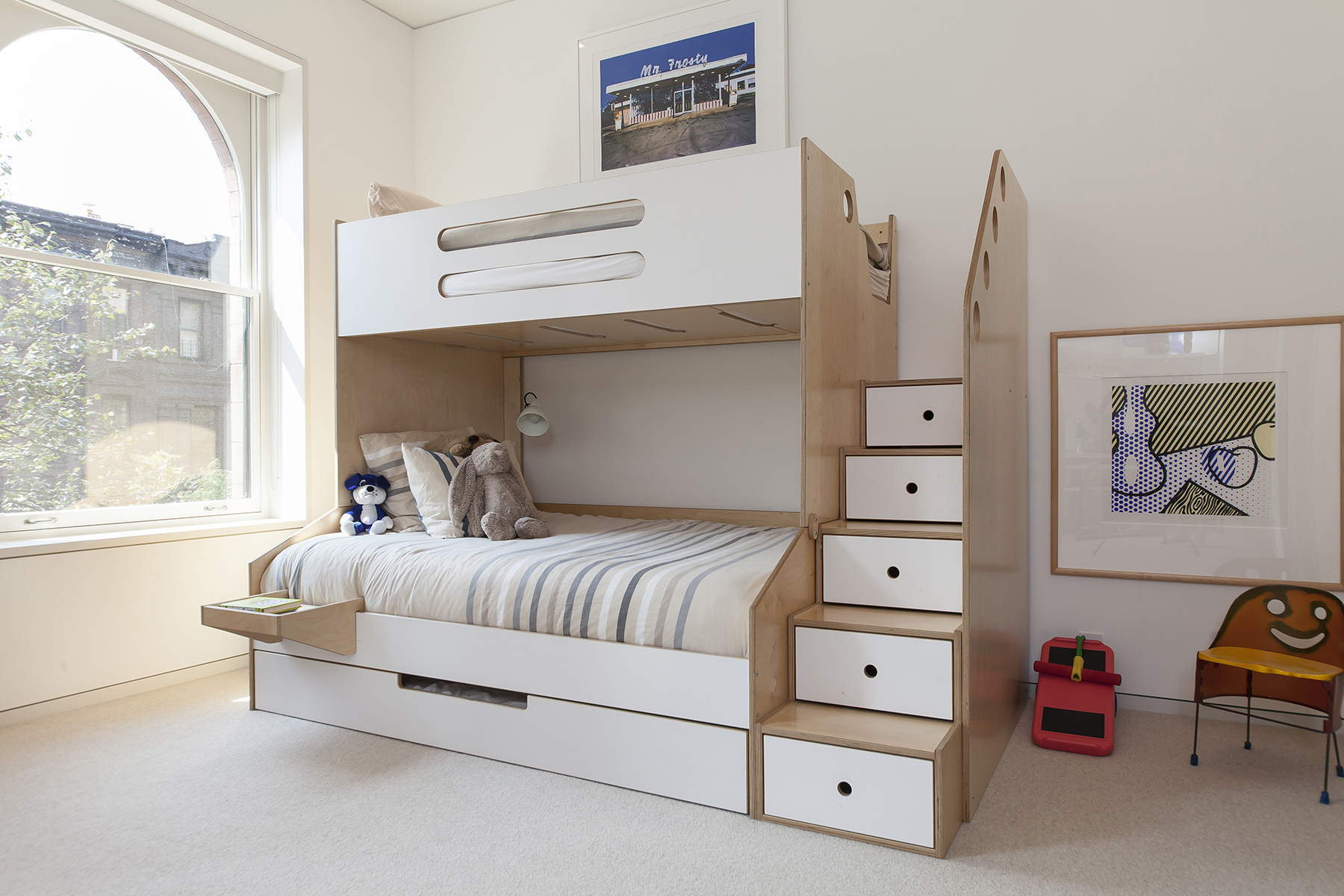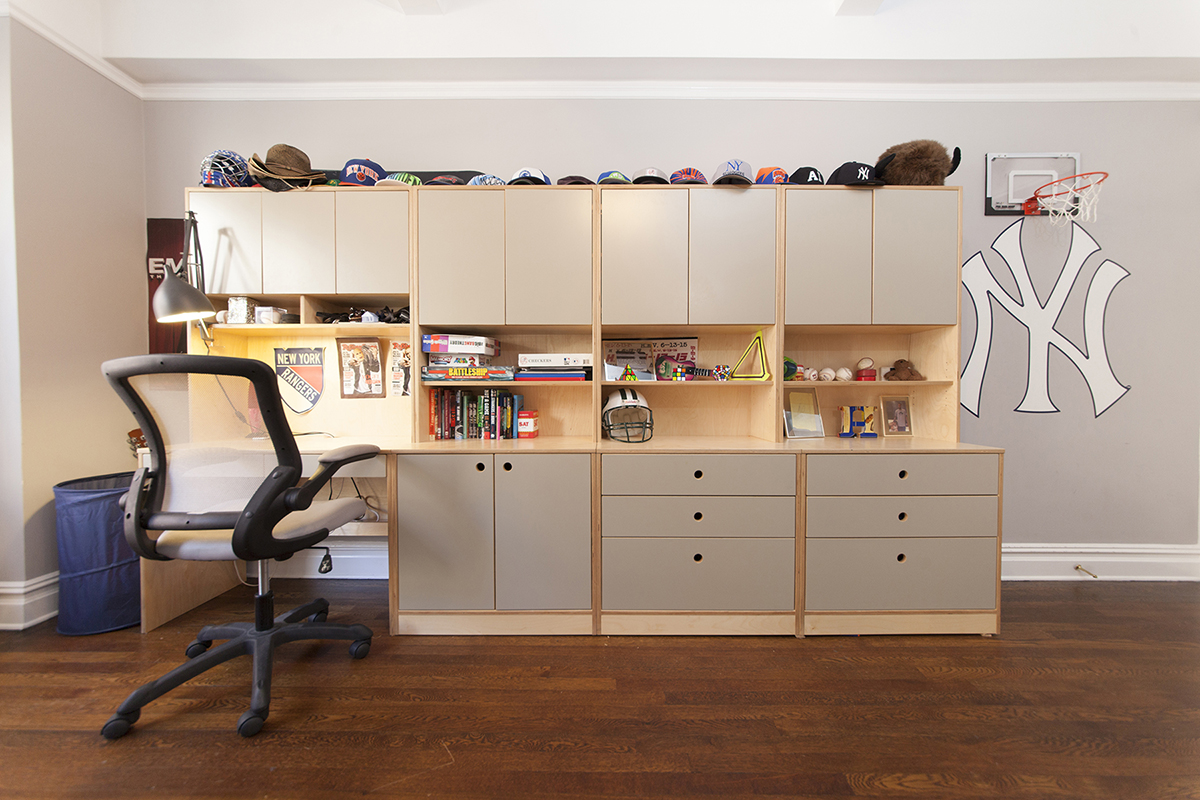Your Cart is Empty

Kids grow. It’s a fact. It’s also one of the most challenging elements of kids’ room and furniture design. It’s essential to keep the future in mind when designing for children. We’ve gathered a few tips and strategies to make the first design phase of your child’s room really count and create a space that easily grows with them.

Clean lines work for kids young and old. Children’s furniture design is first and foremost about function. If you create a space that’s functional and full of readily accessible storage, you’re well on the way to building a room for any child. Clean lines also keep rooms from looking juvenile as kids get older, for a timeless aesthetic.

Modular pieces make it easy to change a room up on a whim as kids grow. While kids often like bunk and loft beds, teens and pre-teens may outgrow the concept. Modular bunk and loft beds can convert into regular beds, separating the upper from the lower bed, alleviating the need to find new furniture.


Modular storage pieces provide flexibility over time as well. Since they are finished on all sides, these bookshelves, dressers, and armoires can be used to create a “wall unit” that looks built in, which can later be separated and moved – into a different part of the room, a new orientation, or a different room altogether. This is particularly helpful for shared spaces: if the kids eventually have their own separate rooms, storage components can be reconfigured.

Neutral furniture colors can be a great way to leave room for personalization through things like curtains, rugs, bedding, and even paint. Those items can be changed easily as your child grows and changes without making any major adjustments to furniture or overall room design, offering flexibility within the original design.

There are safe ways to make certain types of adolescent furniture functional for a young child. Our storage and desks are designed as adult pieces that are suitable for children to use. For example, if your child likes to draw, you might consider giving her a desk and using a booster seat rather than putting a play table in the room. A craft-desk becomes a study space when the child grows into it.
It pays to design with the future in mind, and sometimes that means choosing furniture you know will have to change. The key is knowing how it will need to evolve and how that evolution will take shape. From adding a desk to raising a loft bed, design adjustments are most seamless when they were part of the initial plan. See Aaron’s room for more on two-phase spaces.
